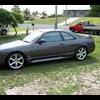Valve Float?....... Next Step?
Announcements
-
Similar Content
-
Latest Posts
-
By Dose Pipe Sutututu · Posted
They are, a good friend of mine bought one to replace his blow factory turbo, running a Toshi Tune reflash. Just use their supplied water/oil lines and you're good to go. At the time, they were like $900 delivered. -
By Murray_Calavera · Posted
This is an option for 100% bolt on, the GCG high flow - https://gcg.com.au/turbo-charger-upgrade-skyline-gtst-2iu-xtrgts-s1.html Also, I'm pretty sure hypergear does a high flow that is 100% bolt on, it just doesn't make as much power as their bigger high flows. Even if you get a hypergear turbo that requires you to chance the intake piping, it is a really simple modification. It can be as simple as a piece of silicon hose and you pop a filter on the end. It doesn't have to be some crazy pie cut titanium work of art intake pipe. If you have the ability to swap the turbo yourself, you would be able to sort the intake piping out. -
Just as a thought, if it's in neutral, thats your drive line disconnect, not the clutch. Clutch slip at the dyno with pedal fully out, is actually adding a second disconnect. So it's not a clutch issue if you're in neutral. Just a bit of friction dragging the output around while in the air.
-
The HG high flow is excellent, and costs about the $$ you're talking about. But it, and probably every other highflow, uses a diffeent core than the original turo, and the original Hitatchi core is quite long. So, I think it is inevitable that there is likely no such thing as a highflow that just "bolts on" with no other effort required. And the same is likely true for HG's outright replacement "bolt on" turbos (the ATR things). And the same is likely true for anything similar from elsewhere. I have no idea if the cheap Chinese/Taiwanese complete turbos from eBay/Temu/etc are as bolt on as they claim. I mean, they claim the bolt onto the NAs as well as the turbos, and we know that can't be "bolt on". But it wouldn't matter because I'm not buying a $169 4 psi turbo for anything other than a paddock basher.
-
Bummer...yeah i "need" something to "ease" up the work and for my driving it would be enough. Iam counting the tune "without" turbo. I do not mean "cheap" like something from Temu around 200 USD, "Cheap" is something around 1000 USD?
-








Recommended Posts
Create an account or sign in to comment
You need to be a member in order to leave a comment
Create an account
Sign up for a new account in our community. It's easy!
Register a new accountSign in
Already have an account? Sign in here.
Sign In Now